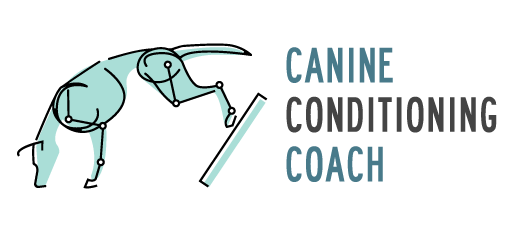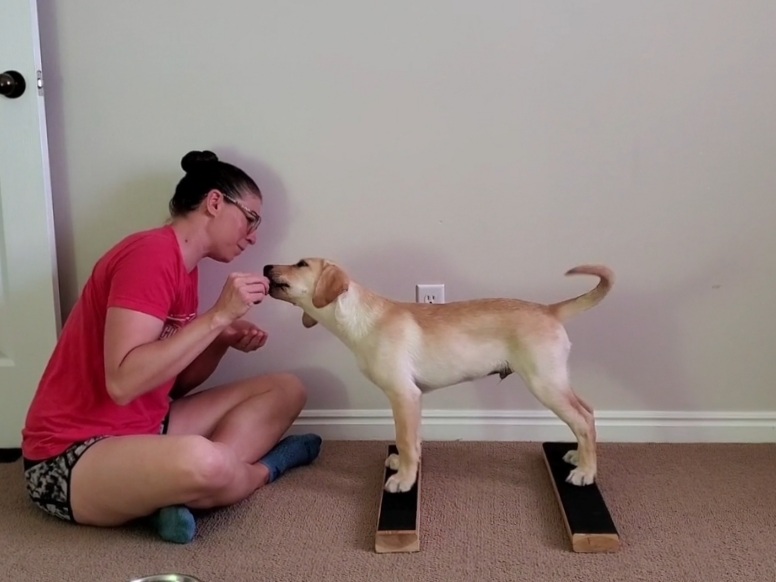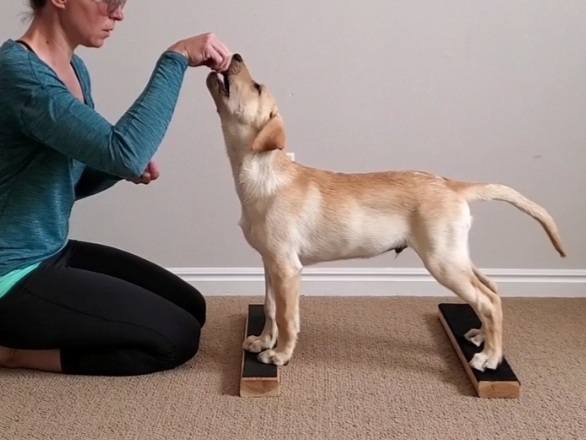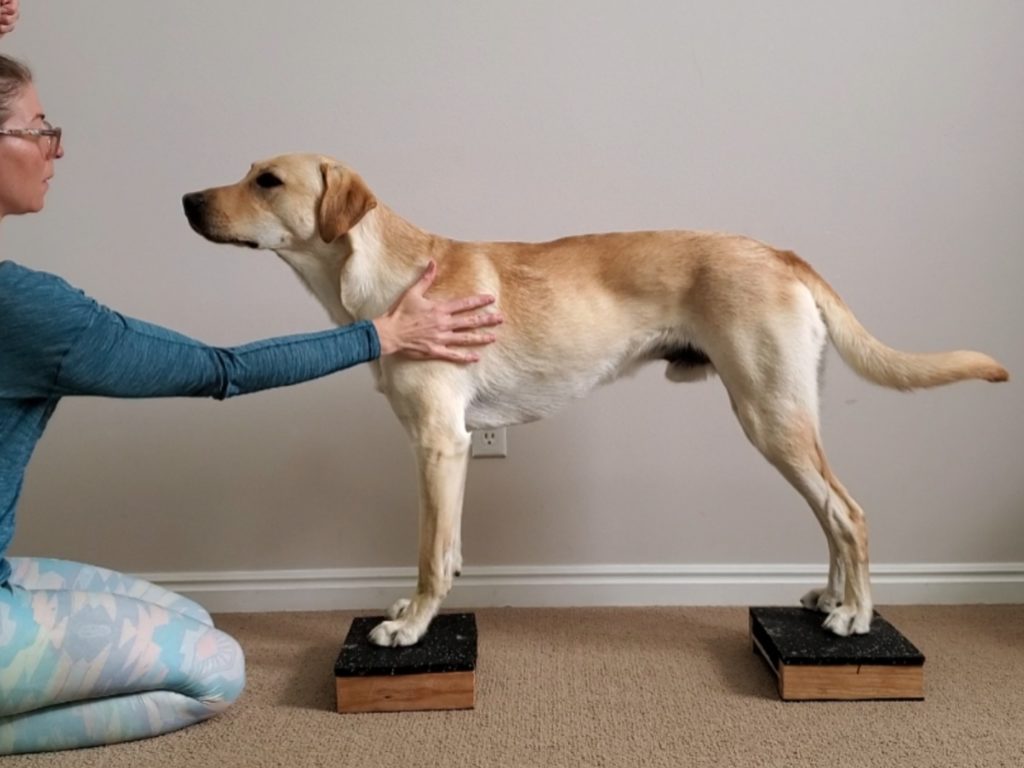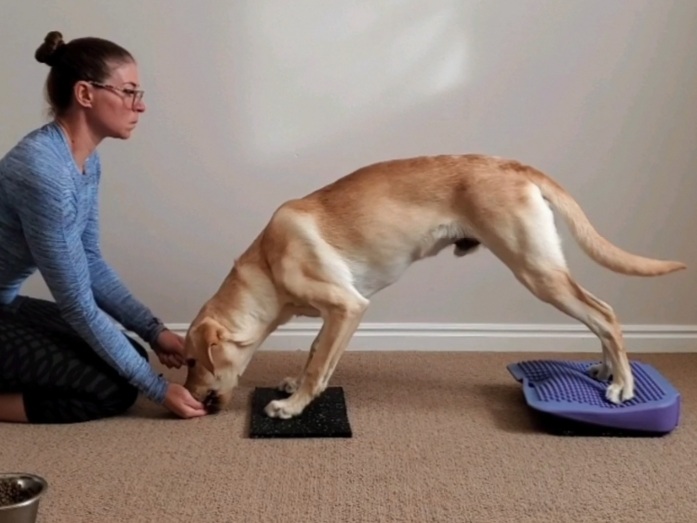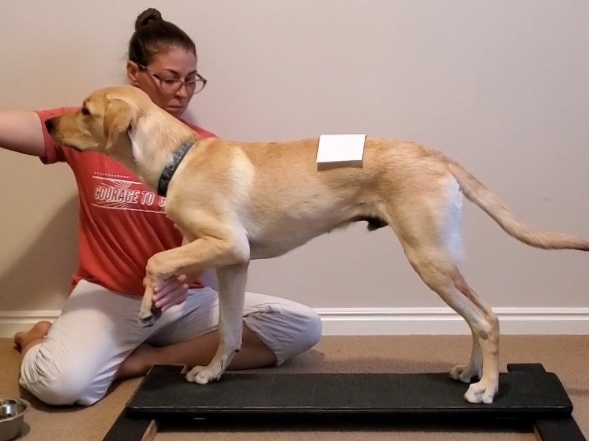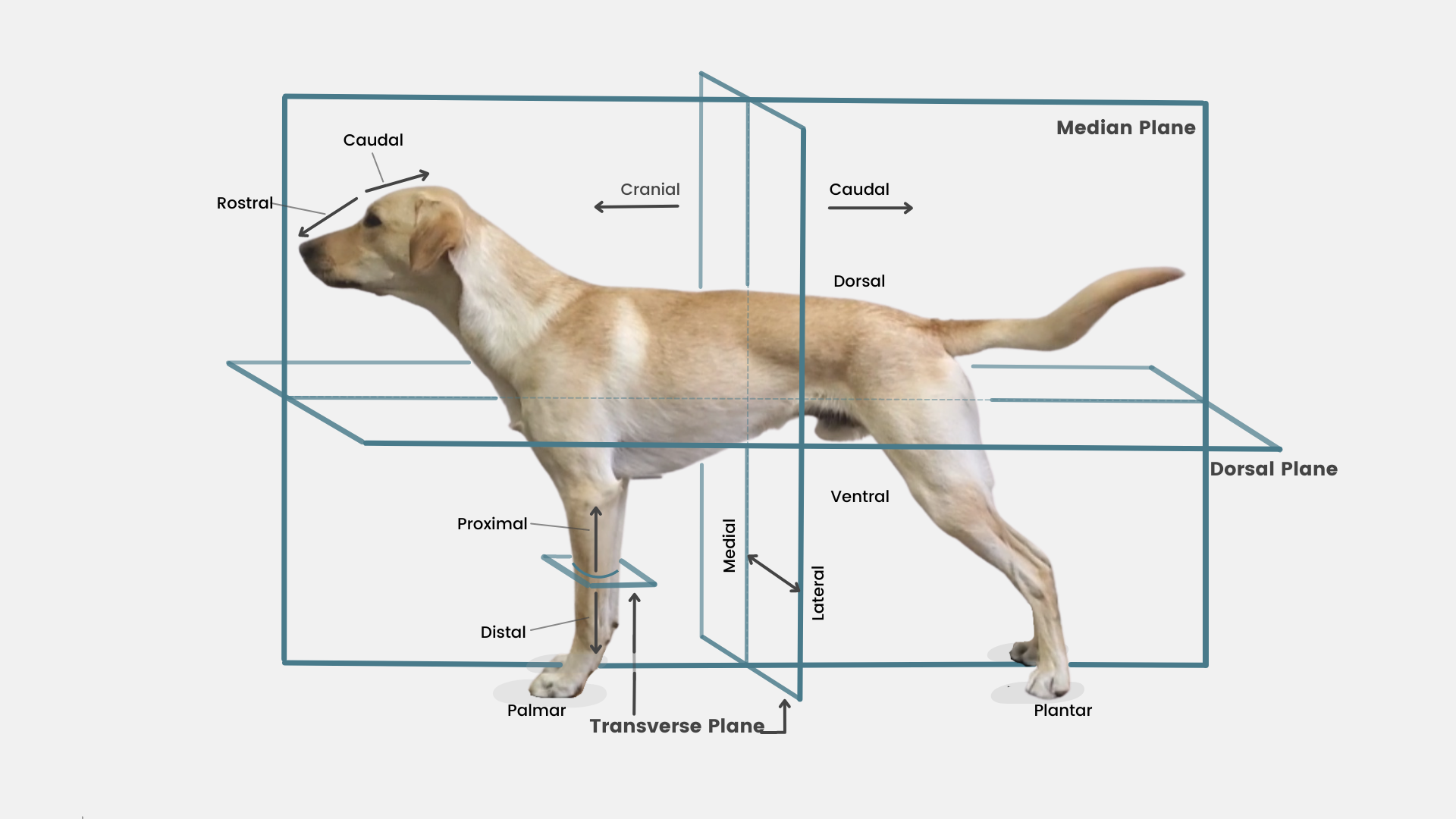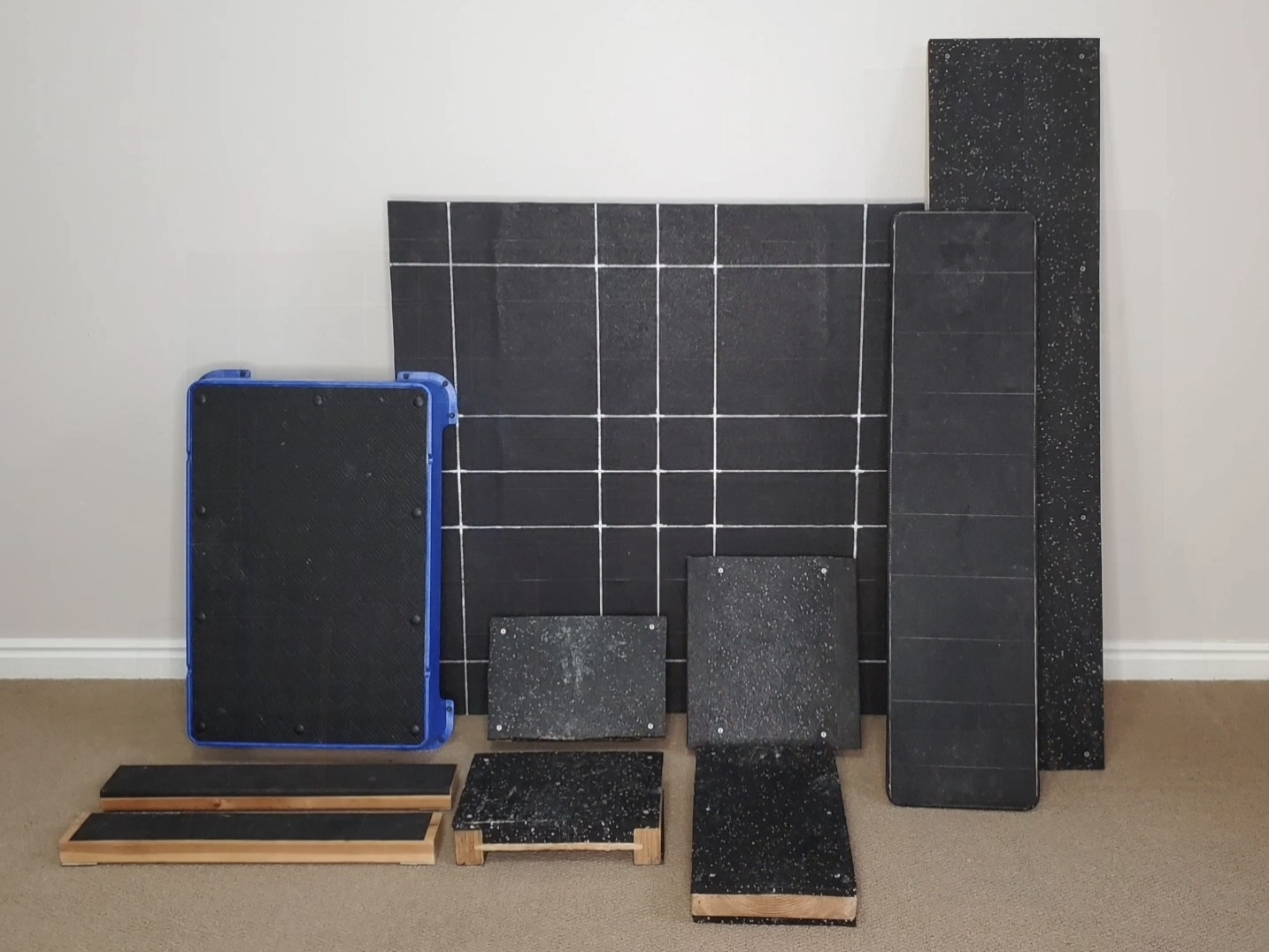Purpose: Teaching stillness is saying… “DUDE! Keep your feet and body still!”… in the absence of information, and for increasing duration. And it is an important skill in canine conditioning… But one that has to be introduced at the right time.
Stillness requires quite a bit of impulse control, so if a pup is too young, or if a dog is still learning to be “operant” (offer behaviors/try things), it can lead to a lot of frustration .
On the other hand, introducing it too late can result in a dog who constantly throws different behaviors at the handler, getting wild and out of control (stressing up/eustress), or gives up and leaves the handler (stressing down/distress), instead of adding duration to the existing/current behavior.
Equipment: 2 Balance Bars, 2 Foot Targets or 2 Sitting Platforms
Targets: Teaching Stillness is a necessary component in advanced conditioning exercises. Having a formal Stillness Cue communicates to the operant dog they are right, and don’t need to offer other behaviors, circumventing a lot of frustration, and keeping the feet still. This allows endurance to be built, while maintaining clarity for the dog.
Putting individual movements/positions on cue (under stimulus control) is one way to attack the problem (Tuck, Rock, Left Rear Lift, Target Right Front, Look over right shoulder, etc) … But with all the different movements/combinations of movements and behaviors we need to move on to advanced conditioning, that’s not always a realistic proposition.
Another option is to put the STILLNESS ITSELF on cue. That’s my preferred method, and what I’ll demonstrate in this video.
Steps:
- I have to prepare my dog to have understanding/fluency of the position I want to add duration to. It’s not fair to the dog, to ask them to learn a new position AND add duration at the same time. Splitting these two components apart increases the success rate and decreases frustration. Here I’m starting with the Square Stand: Foundation exercise.
- I ask for the TINIEST amount of duration in the beginning. So short that I can guarantee my dog won’t reposition his feet. Once I have a chance to “capture” and mark/ reward (m/r) that tiny bit of stillness, I can add duration a tiny bit at a time.
- Once my dog understands my verbal + support cues, I can ask him to generalize that behavior, and transfer the stillness to other body positions, other equipment, and different environments. This is detailed in the video.
- It’s important to only change one variable at a time. Either ask for duration OR a new piece of equipment OR a new body position. And when making something harder, something else has to be made easier (asking for an unstable surface or harder body position, means a decrease in duration).
Watchpoints:
- Things will fall apart quickly if too much duration is asked for too quickly.
- I literally only ask for 1 second of Stillness for the first several reps. This allows me to mark and reward before the dog has the option to do anything else, so I can capture the desired stillness.
- After releasing from the props and resetting, I only ask for 2 seconds… building to 5 seconds MAX in the first session.
- The trap here is to “over ask”, then the feet move, and things get muddy for the dog. Less is definitely more. This is detailed in the video.
A real life example of Teaching Stillness can be seen in the Manual Leg Lift, Weight Shifting and Shoulder Strength & Stability exercise
